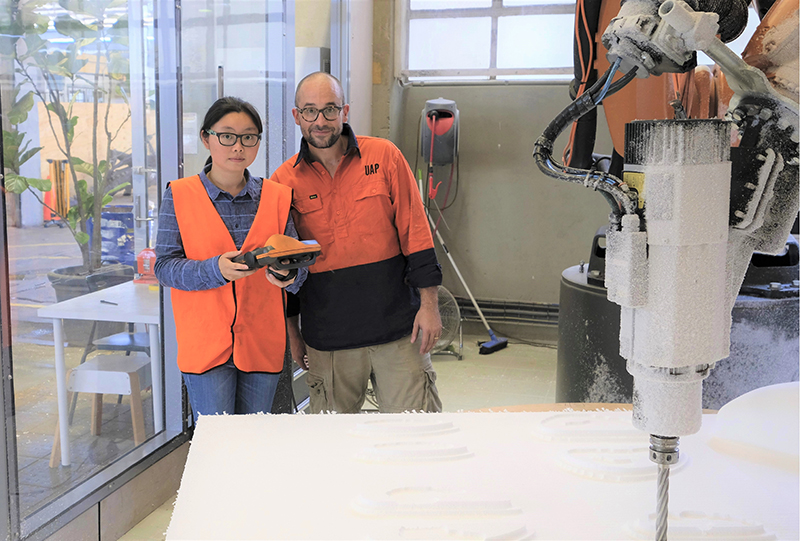JING PENG | BETTER ROBOT GRINDING

Jing Peng
Postdoctoral Research Fellow
Favourite quote: “Self-discipline and Social Commitment”
Tsinghua University’s motto
Favourite Robot: Baymax, the soft inflatable robotic
healthcare assistant.
Why robots?
Robots can improve the lives of people by making human work safer and more
precise. For example, surgical robots can offer less pain and a faster recovery to patients.
Tell us a bit more about your background. How did you end up in Design Robotics?
My expertise is in developing ultra-precision low-damage polishing tools and
machinery for chemical-mechanical polishing. I completed my BEng in Measurement, Control Technology and
Instruments and my PhD in Mechanical Engineering at Tsinghua University. There I co-invented (with Prof.
Xinchun Lu and Dewen Zhao) a conditioner for conditioning the polishing pad and we got a granted patent
for that. The patent is cited by global market leaders, e.g. Siltronic AG, Fujikoshi
Machinery.
My PhD thesis was on ultra-precision low-damage polishing and its mechanism
for polishing KDP crystals. KDP crystals are soft, brittle and
deliquescent. To achieve high performance as frequency convertors in high power laser systems, they need
to have a super-smooth surface. To further investigate the crystals’ mechanical properties, I joined Prof.
Liangchi Zhang’s group at UNSW and carried out nanoindentation tests with a
conical diamond indenter. We discovered the elastic-plastic deformation of KDP crystals under
nanoindentation. Then I returned to Tsinghua and built the theoretical model for polishing and through
lots of polishing tests achieved surface roughness of 0.62 nm* for
KDP by optimizing various machining conditions and slurry formulation.
After graduation, I worked as a Postdoctoral Fellow in Surgical Robotics and
Soft Robotics at the University of Hong Kong. While leading the surgical robot project, I co-invented
(with Prof. Zheng Wang, Prof. Zhiqiang Chen and Prof. James Lam) arm units and surgery robot systems and
we received a granted patent for that. The project team built generations of surgical robot prototypes
with 6mm diameter robot arm. These are tiny enough to go through natural orifices with a dexterity of 7
DOF and large output force to perform surgery. I also designed and fabricated soft actuators for a soft
robotic manipulator project.
All of these varied experiences set the stage for me to work with robots for
advanced manufacturing in Design Robotics.
*nm= a nanometer, which is 1/1,000,000,000
of a meter; 0.62 nm surface variation is
a surface variation of less than 1/100000th of the thickness of a human hair.
Tell us a little more about the problem you are solving in Design Robotics.
I am adding pneumatic-controlled soft actuation into Design Robotics and
integrating precisely controlled pneumatic soft actuation with industrial robots and advanced computer
vision to realize automated high-quality sanding, grinding and polishing of UAP sculptures. I am also
doing mechanical design for the linishing tests.
What has been your biggest joy with the project so far?
I have been part of Design Robotics since October 2019, so I am still new to
the team. I get to work with great design and engineering professionals which is a wonderful experience
for me. But mostly, getting to work with Prof. Jonathan Roberts, my supervisor and robotics researcher
with experience in both academia and industry, has been my highlight so far.
To connect with Jing and learn more about her work:
Design Robotics | QUT Profile | LinkedIn |
Google
Scholar